Reflections from Red Badger's 2025 Partner Day
Dive into Red Badger's Latest Annual Partner Day and learn how alignment, strategic hires, and client trust are central to how we're creating shared...
How a two-day training session for Anthony Nolan helped the organisation adopt a more human-centric approach through user-centred problem solving.
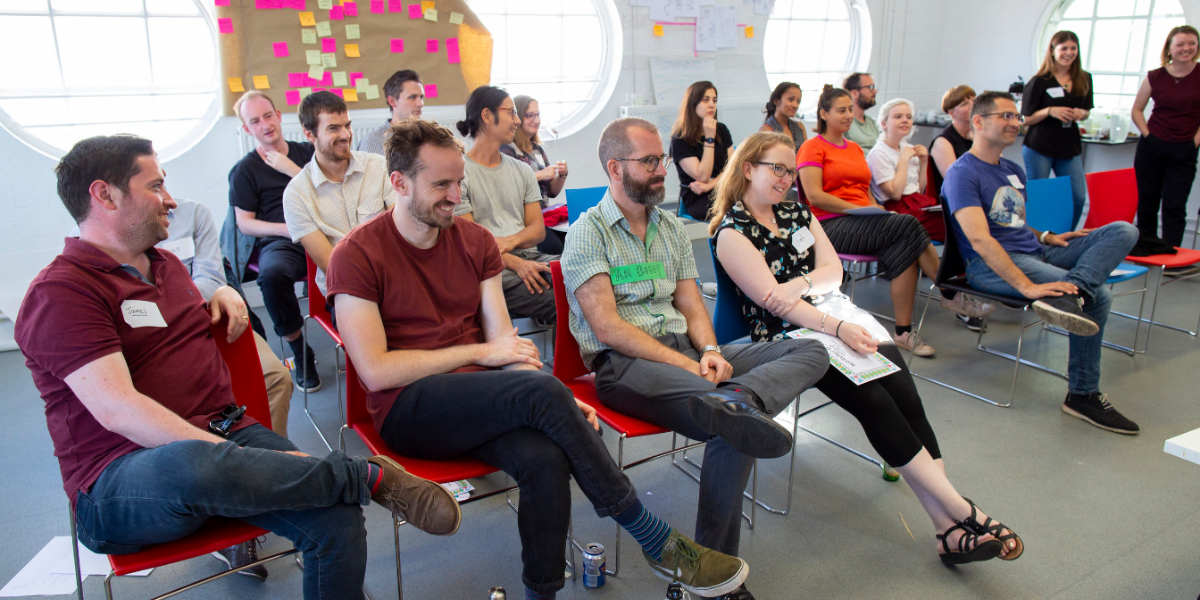
Red Badger’s social value task force started a dialogue with Anthony Nolan, the biggest blood cancer charity. They help save the lives of people with blood cancer and blood disorders with the help of matching stem cell donors & supporters.
James Small, who is Head of Digital Engagement, got in touch with us and asked if we could run a training session to help the organisation adopt a more human-centric approach.
A challenge we wanted to address was to make the learning stick beyond the boundaries of the training, and make it relevant and easily transferable into the day-to-day work of the team.
To achieve this we decided to bring real patients and donors with their experiences into a two-day workshop. Any insights from the interviews, the stakeholder maps, personas, and journey maps would guide the first steps toward a more user-centred organisation.
Soon Clementine and Andreas met James and the department leads and mapped critical touchpoints with patients, donors, medical staff and other stakeholders. Each department lead talked us through the central customer journey and typical pain points.
The complexity of the selected training topic should be high enough to be relevant, and easy enough to give the participants a successful experience in the learning context. Together we chose two user journeys to focus on and James recruited users for the training workshops.
We ran a two-day workshop for Anthony Nolan to introduce teams to user-centred problem solving and had lots of fun. The workshop was attended by representatives from different areas of the Anthony Nolan charity, from Technology to Social Media, they formed a group of around 20.
Jun, Sari, Steve and I lead the workshop and after a brief introduction, we began by splitting the groups in two, each group focusing on a different user journey, one patient and one donor. We invited a volunteer from each to join us for a few hours during the research phase where they shared their experiences with their group.
We used the Design Council’s double diamond to structure the workshops.
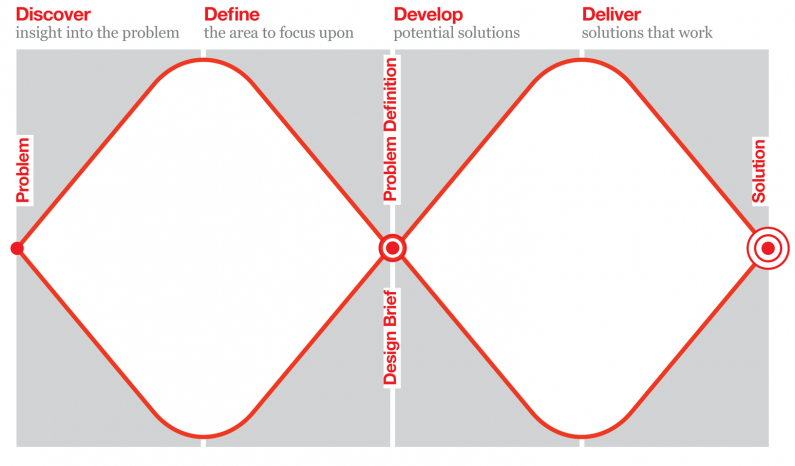 The Design Council Double Diamond
The Design Council Double DiamondWe kicked off with discovery. This looked at challenges Anthony Nolan faced, from donor acquisition to communications and measures of success.
This was followed by user needs, for which we had arranged a donor and patient to come along and speak about their end-to-end experience with Anthony Nolan. From how they came across to finding out about Anthony Nolan, all the way through their experience as a donor or a patient.
For some, it was the first time they had spoken to a donor or a patient and it was an eye-opening experience for them. The interviews conducted by the Anthony Nolan teams were a great place to start identifying problem areas and opportunities to improve.
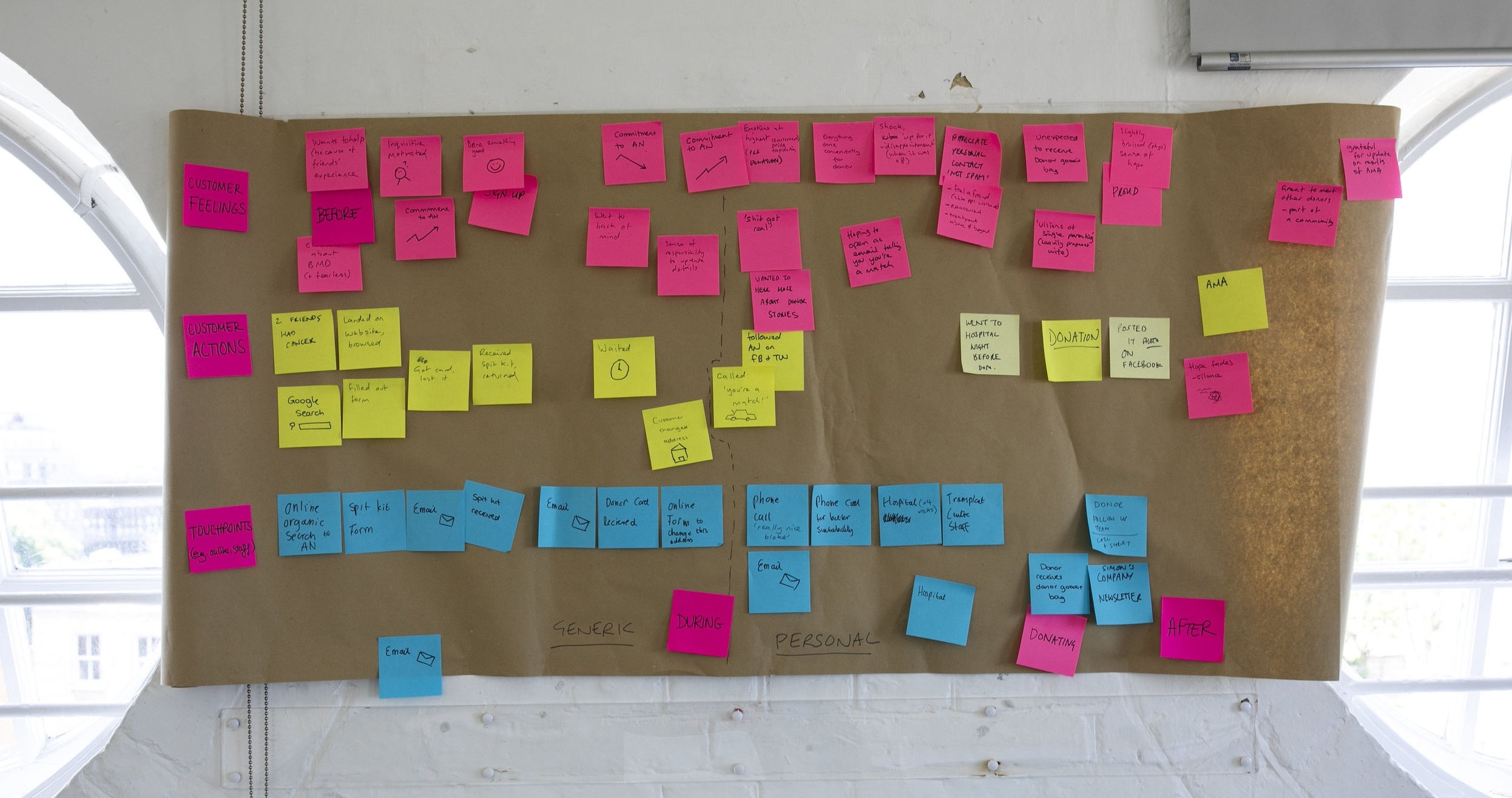 User journey map
User journey map To bring the insights from the interviews to life, we built customer journey maps.
This allowed the teams to understand the whole Anthony Nolan journey from the perspective of an end user. It was a great exercise thinking about the different touchpoints users experience under the same brand, that is Anthony Nolan.
We finished the day by defining the problem statement from the obvious pain points on the user’s journey and generated How Might We questions to help fuel us in building ideas.
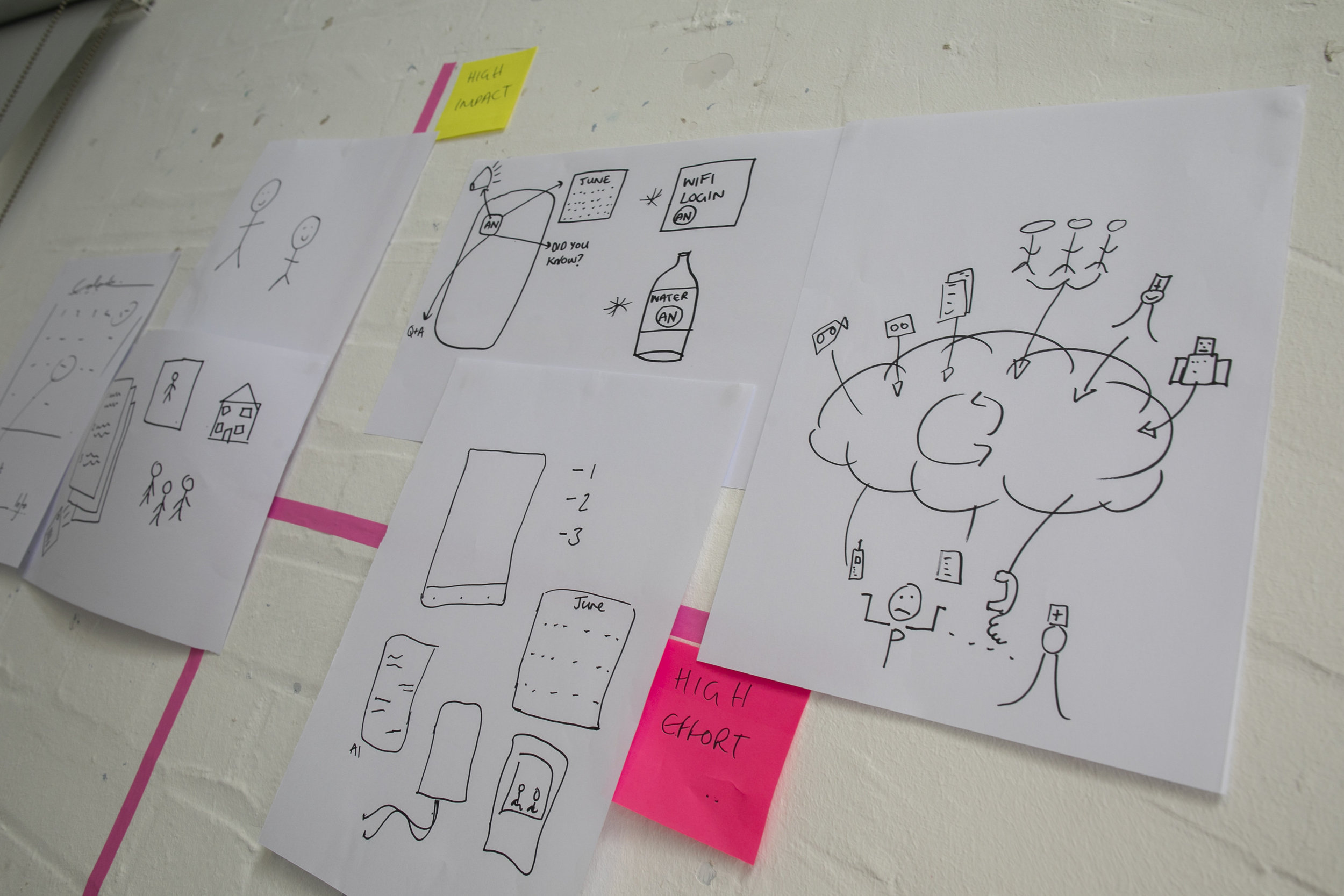 Ideas mapped on a grid
Ideas mapped on a grid We kicked off the second day with some rapid idea generation. After a few rounds of quick sketching with Crazy8’s and the teams picked an idea they wanted to develop further.
This part was quite fun (and challenging) as the balance of crazy ideas to the realism of feasibility is a fine line and a learnt skill.
“I can’t draw” was no excuse, and even the team members who were reluctant at first got into drawing loads of ideas.
By the end of the sketching sessions, we had lots of great ideas. To help prioritise which idea to try out first, we mapped them on a grid of effort to implement vs user value.
Visualising the ideas based on the two criteria helped teams pick the ones they’d want to learn from quickest; which were the ones that would take low effort to implement while delivering high value to end users.
Once the teams had chosen the idea they wanted to take forward, we moved on to delivery - which is all about prototyping and quick learning.
The biggest learning we wanted to come across was the non-attachment to ideas and prototypes. To visualise the winning concept to the teams’ chosen problem statement we made a poster.
The goal of the poster was to introduce testing ideas early on and to emphasise the importance of having a clear value proposition. Each team made a poster and received feedback on the presentation of their concept which they used to refine for the next activities.
After the teams had the concept ready to go, we brought the prototyping boxes out.
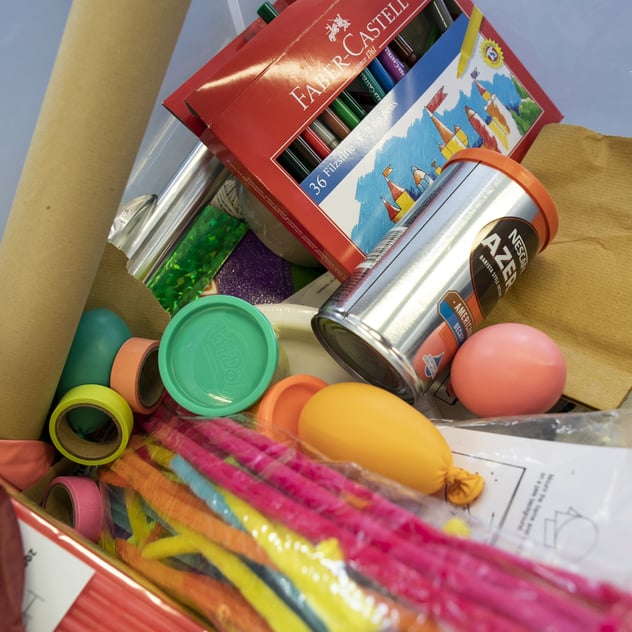
If you haven’t heard of it before it is the box every kindergarten has and every adult dreams of getting their hands on.
These boxes were full of stickers, cardboard pieces, and all the craft materials you can think of. The materials aim to replace overthinking of the perfect solution and focus on the message - while having fun.
Some even went “outside the box” and used the coat rail that was in the room.
We ended up with amazing prototypes that were simulating their solution to the pain point they had identified. All in just two days.
We had two judges, Nathalie and Claire, on the day that would participate and award the teams based on their prototypes.
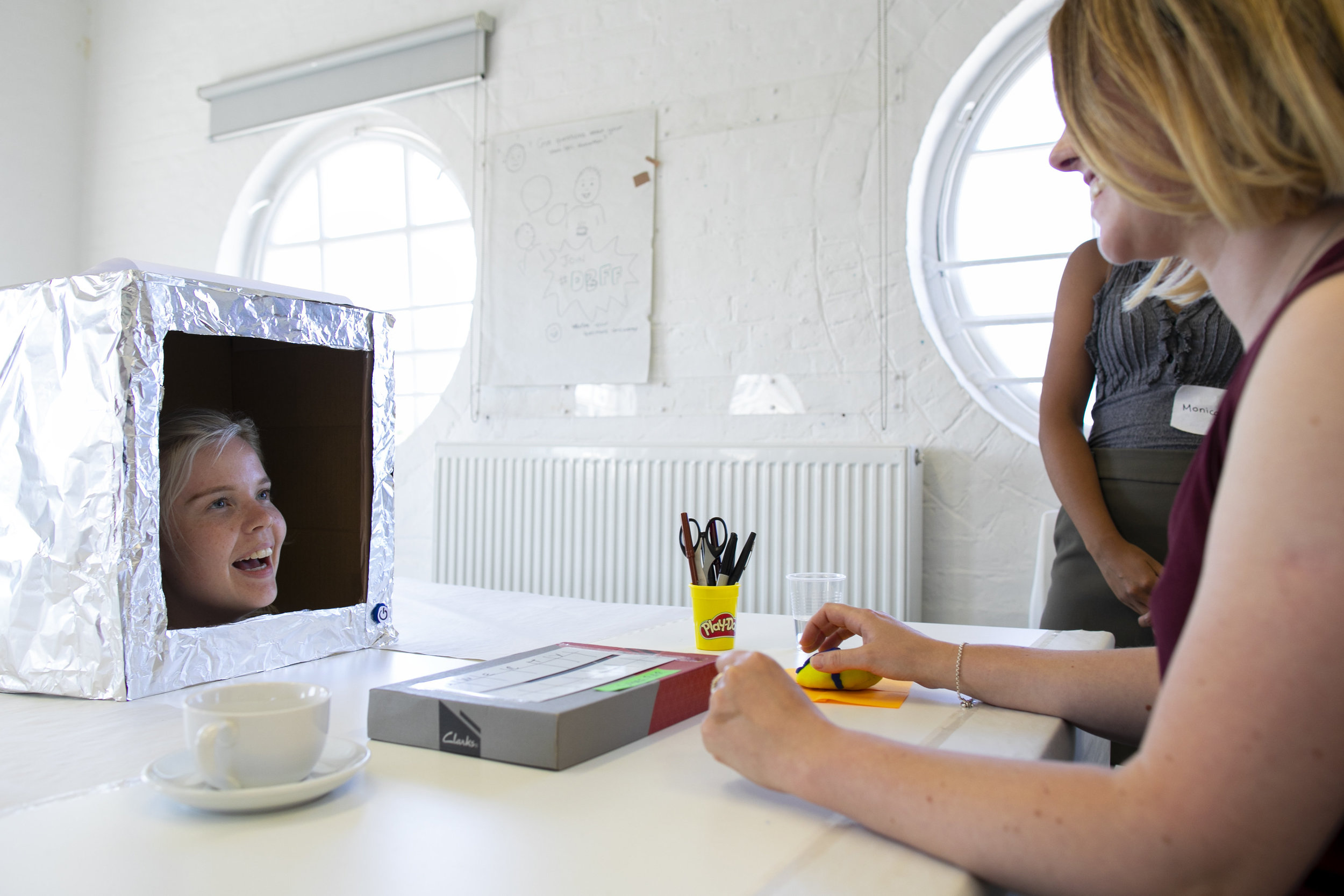
The awards were:
All in all, it was a great two-day experience with such an enthusiastic crowd.
We had loads of fun and were very proud of the ideas and prototypes the teams put forward.
Here’s what the participants had to say about the two days:
“I enjoyed the two days and working through the process. It was good to do something so activity-focused and learn by doing.”
“I learnt … How to test ideas quickly and easily through prototyping”
“The most valuable piece of information I learnt was … to try something small and then build on it - don't need to go out with something perfect.”
“Red Badger put together an incredibly thoughtful workshop that was completely tailored to Anthony Nolan’s needs. All our participants left raving about the new techniques they’d learned, and the valuable insights and perspectives they’d gained from talking to our donors and patients.
"We have definitely become more focused on user needs as a result of the workshop, and we have established a shared language, so most people understand when we talk about a user-centred practice that we’re not talking about a technical methodology that lives in the Digital team but rather about something that goes to the core of our organisational values.
"We have also taken away lots of practical techniques for rapid idea generation and prototyping, which we’ve applied successfully to projects already.”
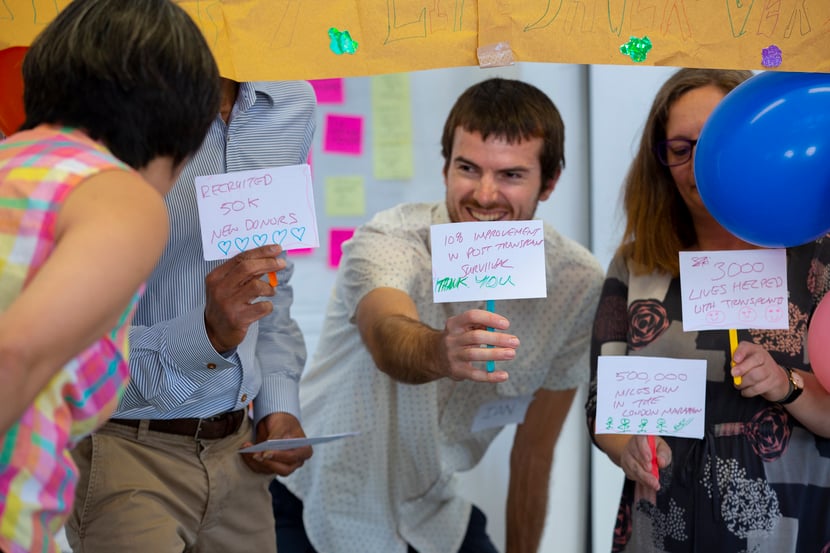
It’s best to do User Centred Design by doing. Seeing the mindset shift, even slightly was very rewarding. At the beginning of the two days, Anthony Nolan teams knew they had to shift the focus to their end users but didn’t know how.
They had been talking and planning about solutions that didn’t go anywhere. Wanting to come up with the perfect solution the first time around can be a blocker to getting ideas off the ground. The two days gave Anthony Nolan a space to listen to users, explore even the craziest ideas and test them out with the permission to fail.
The two days gave them the inspiration and hopefully a user-first mindset, and that they can now carry on in their day-to-day work.
Not long after the workshop we got great news, the graduates of the training had already started implementing their learnings at Anthony Nolan. They had run a Crazy 8’s and a How Might We session to explore ways of transferring their User Centred Design skills across the business and are including more learnings in their day-to-day work.
Here’s what they will be working on internally:
“HMW disseminate what we've learned about UCD among our teams and others?”
“HMW embed a user-centred culture at Anthony Nolan?”
We are very proud and can’t wait to see the outcomes!
Want to get a bit more insight into the workshop? Check out some more photos of the two days on our Facebook page here.
If you’d like to discuss running a UCD training with your team, get in touch at hello@red-badger.com
Dive into Red Badger's Latest Annual Partner Day and learn how alignment, strategic hires, and client trust are central to how we're creating shared...
Personalisation is now a core business strategy - how to break silos, scale empathy, and drive lasting customer value in retail & hospitality.
The importance of innovation to deliver modern retail success. Now is the time to innovate online, offline and back-office functions.
Add a Comment: